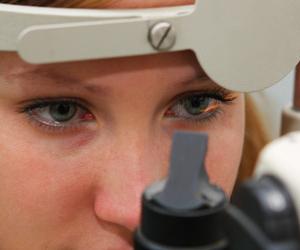Ulcerative colitis, forms and symptoms of the disease
In this disease, partially or completelythe colon is affected. A typical ulcerative colitis is a chronic disease with an undulating course. Periods of improvement in patients are followed by worsening. During exacerbations the picture of ulcerative-hemorrhagic or purulent inflammation of the mucosa of the entire colon develops. It can take place with a high temperature, a severe general condition. In most cases, chronic ulcerative colitis leads to metabolic disorders and the development of general dystrophy.
Causes of the disease and the mechanism of its development up toend are not clear. There are various theories of its origin, considering infectious, allergic, neurogenic, autoimmune, genetic and other factors. Probably, in the appearance of typical changes in the mucosa of the intestinal mucosa, various, interacting causes can take part. Symptoms of ulcerative colitis consist of symptoms of damage to the rectum, sigmoid colon and descending colon. With the flow, a mild and severe form of the disease is isolated.
Light form
This is the most common form of the disease. Sometimes the clinical picture with it is so little expressed that ulcerative colitis is established only when performing a sigmoidoscopy. Patients may occasionally be disturbed by occasional pain in the abdomen to the left and a loose stool in which an admixture of veins of blood and mucus is visible. In some cases, people complain of constipation. Sometimes in the feces there is an admixture of fresh blood, which gives reason to assume hemorrhoids. The condition of the patients is satisfactory. Sometimes there is a low-grade fever. The mild form of the disease can turn into a more severe one.
Heavy Form
It can occur in two clinical variants:
- Toxic form
- Chronic recurrent form.
With the first variant, ulcerative colitis developsvery fast. Suddenly, the patient has a loose stool in which an admixture of mucus, blood and pus is visible. There are painful desires for defecation. Sometimes they are so strong that they are complicated by the prolapse of the rectum. Patients lose a lot of fluid and blood with diarrhea. As a result, they develop dehydration and anemia. The skin becomes pale and flabby, exhaustion begins. Develops a toxic syndrome, hypovitaminosis with glossitis, stomatitis, inflammation of the gums. All this is accompanied by a high temperature and a severe general condition.
The chronic recurrent form is30-40% of all cases of the disease. It often occurs against the background of a light form. The patient is disturbed by a frequent and liquid stool with blood and mucus. Then comes the period of improvement, again followed by deterioration of the state. Patients complain of a decline in strength, they are disturbed by sleep and working capacity. Ulceration occurs on the mucosa of the large intestine. There may be complications in the form of acute expansion of the colon, its perforations, rectal fistulas, abscesses, intestinal stenosis.
Treatment of the disease consists of diet, strugglewith infection, symptomatic therapy and surgical treatment. A special diet for ulcerative colitis is needed to restore metabolism, combat vitamin deficiency and anemia. In the first days of illness the patient is given tea, rice broth, compotes and kissels. Then gradually move on to full nutrition. In the food should be enough protein and carbohydrates, and fats somewhat restrict. Pay attention to the sufficient content of chlorides (salt) and potassium. The diet should be mechanically and chemically sparing and slightly irritating. The most suited is the wiped Pevsner's diet.
Patients with ulcerative colitis need constant medical supervision. With ineffective dietary and drug therapy, surgical treatment is recommended.



